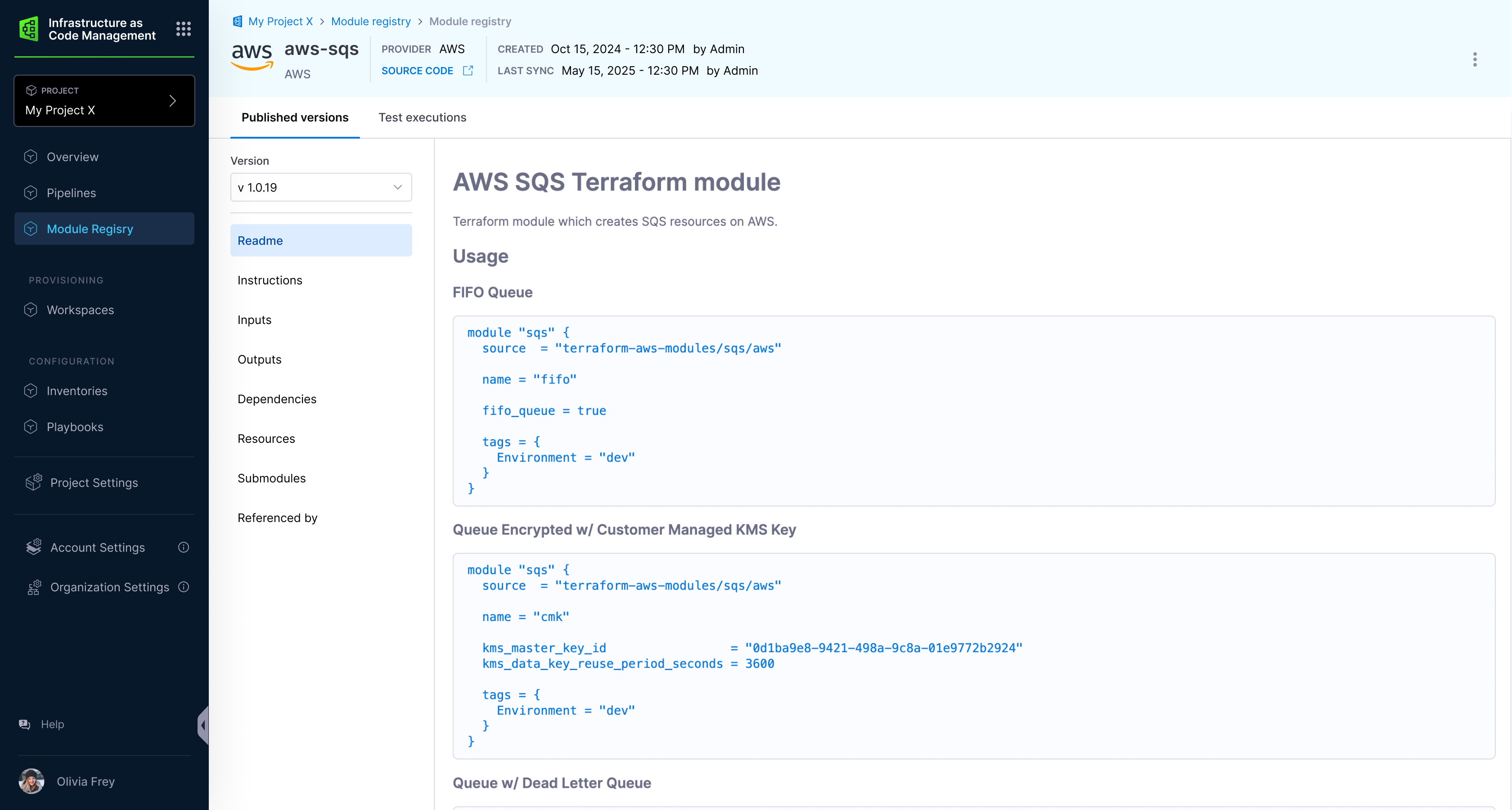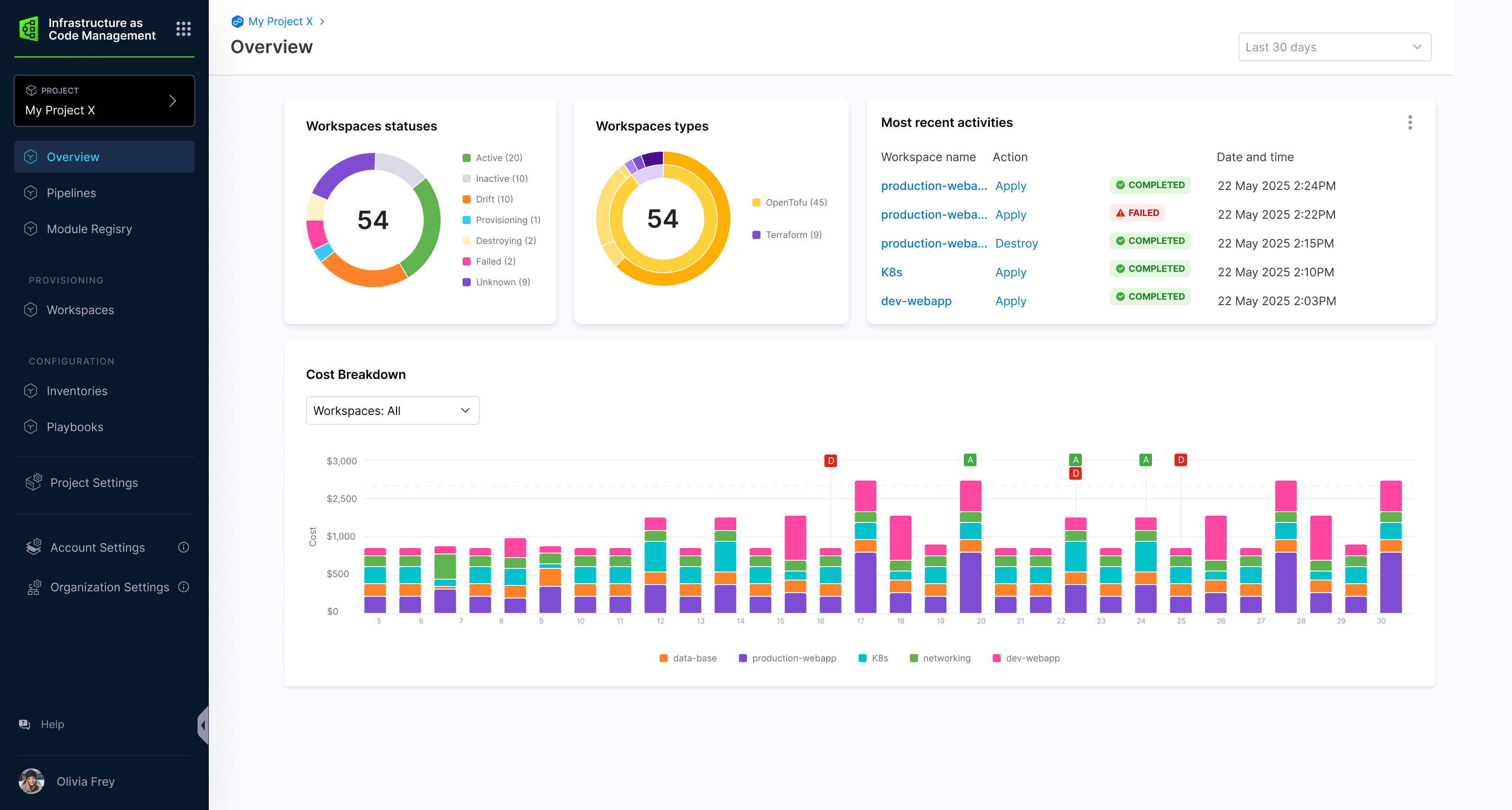
Harness Infrastructure as Code Management (IaCM) celebrates its first year with major new features focused on reusability and scalability. The launch of Module Registry and Workspace Templates empowers teams to standardize and reuse infrastructure, with one customer scaling to over 4,000 workspaces. These updates help organizations accelerate delivery, reduce risk, and scale infrastructure as code efficiently.
When we launched Harness Infrastructure as Code Management (IaCM), our goal was clear: help enterprises scale infrastructure automation without compromising on governance, consistency, or developer velocity. One year later and we’re proud of the progress we’ve made when it comes to delivering this solution with unmatched capabilities for templatization and enterprise scalability.
Today we’re announcing a major expansion of Harness IaCM with two new features: Module Registry and Workspace Templates. Both are designed to drive repeatability, security, and control with a common foundation: reusability.
In software development we talk quite a bit about the DRY principle, aka “Don’t Repeat Yourself.” These new capabilities bring that mindset to infrastructure, giving teams the tools to define once and reuse everywhere with built-in governance.
Bringing Reusability to Infrastructure
During customer meetings one theme came up over and over again – the need to define infrastructure once and reuse it across the platform in a secure and consistent manner, at scale. Our latest expansion of Harness IaCM was built to solve exactly that.
The DRY principle has long been a foundational best practice in software engineering. Now, with the launch of Module Registry and Workspace Templates, we’re bringing the same mindset to infrastructure – enabling platform teams to adopt a more standardized approach while reducing risk.
From a security and compliance perspective, these features allow teams to define infrastructure patterns once, test them thoroughly, and then reuse them with confidence across teams and environments. This massively improves consistency across teams and reduces the risk of human error — without slowing down delivery.
Here’s how each feature works.
Module Registry: Centralized Reusability for Tested Infrastructure Modules
Module Registry empowers users to create, share, and manage centrally stored “golden templates” for infrastructure components. By registering modules centrally, teams can:

- Reuse proven infrastructure patterns across projects without repeating code.
- Accelerate deployments by giving developers access to pre-approved and well-tested modules.
- Enforce governance through centralized oversight, ensuring only compliant, secure modules are used.
By making infrastructure components standardized, discoverable, and governed from a single location, Module Registry dramatically simplifies complexity and empowers teams to focus on building value, not reinventing the wheel.
The potential is already generating excitement among early adopters:
"The new Module Registry is exactly what we need to scale our infrastructure standards across teams,” said John Maynard, Director of Platform Engineering at PlayQ. “Harness IaCM has already helped us cut provisioning times dramatically – what used to take hours in Terraform Cloud now takes minutes – and with Module Registry, we can drive even more consistency and efficiency."
With Module Registry, we’re not just improving scalability, we’re simplifying the way teams manage their infrastructure.
Workspace Templates: Standardized Blueprints for Every New Project
Workspace Templates allow teams to predefine essential variables, configuration settings, and policies as reusable templates. When new workspaces are created, this approach:

- Enables teams to “start from template” and quickly spin up new projects with consistent, organization-approved settings.
- Reduces manual effort and accelerates onboarding by eliminating repetitive setup tasks and avoiding common misconfigurations.
- Keeps standards current by ensuring that any updates or improvements to a template automatically apply to all new workspaces created from it.
By embedding best practices into every new project, Workspace Templates help teams move faster while maintaining alignment, control, and repeatability across the organization.
How IaCM Has Transformed Infrastructure Management
Traditional Infrastructure as Code (IaC) solutions laid the foundation for how teams manage their cloud resources. But as organizations scale, many run into bottlenecks caused by complexity, drift, and fragmented tooling. Without built-in automation, repeatability, and visibility, teams struggle to maintain reliable infrastructure across environments.
Harness IaCM was built to solve these challenges. As a proud sponsor and contributor to the OpenTofu community, Harness also supports a more open, community-driven future for infrastructure as code. IaCM builds on that foundation with enterprise-grade capabilities like:
- Policy-aware pipelines that bake in governance and security from the start
- Change review workflows that catch issues early and enable safe collaboration
- Developer self-service with automated guardrails
- Reusable templates, modules, and variable sets that reduce duplication and enforce standards
- Tight integration with Harness CI/CD and Cloud Cost Management for full lifecycle automation and insight
Together, these capabilities help teams to:
- Move faster with flexible, standardized infrastructure workflows
- Minimize risk by enforcing best practices automatically
- Accelerate developer productivity without compromising on controls
- Streamline operations while maintaining visibility and accountability across teams
Since its GA launch last year, Harness IaCM has gained strong traction with several dozens of enterprise customers already on board – including multiple seven-figure deals. In financial services, one customer is managing dozens of workspaces using just a handful of templates, with beta users averaging more than 10 workspaces per template. In healthcare, another team now releases 100% of their modules with pre-configured tests, dramatically improving reliability. And a major banking customer has scaled to over 4,000 workspaces in just six months, enabled by standardization and governance patterns that drive consistency and confidence at scale.
With a focus on automation, reusability and visibility, Harness IaCM is helping enterprise teams rethink how they manage and deliver infrastructure at scale.
What’s Next for IaCM?
Harness’ Infrastructure as Code Management (IaCM) was built to address a massive untapped opportunity: to merge automation with deep capabilities in compliance, governance, and operational efficiency and create a solution that redefines how infrastructure code is managed throughout its lifecycle. Since launch, we’ve continued to invest in that vision – adding powerful features to drive consistency, governance, and speed. And we’re just getting started.
As we look ahead, we’re expanding IaCM in three key areas:
- Expanded Support for IaC Tools: We’re expanding support to tools like Ansible and Terragrunt. Teams can manage infrastructure provisioning, configuration, and application deployment all within a single Harness pipeline.
- Standardization at Scale: We’re rolling out reusable variable sets and a centralized provider registry to make it easier for teams to standardize configuration and onboard new projects quickly.
- Developer Experience: We’re significantly improving how teams create and manage ephemeral workspaces for testing, iteration, and experimentation in isolated, secure environments.
I invite you to sign up for a demo today and see firsthand how Harness IaCM is helping organizations scale infrastructure with greater speed, consistency, and control.

